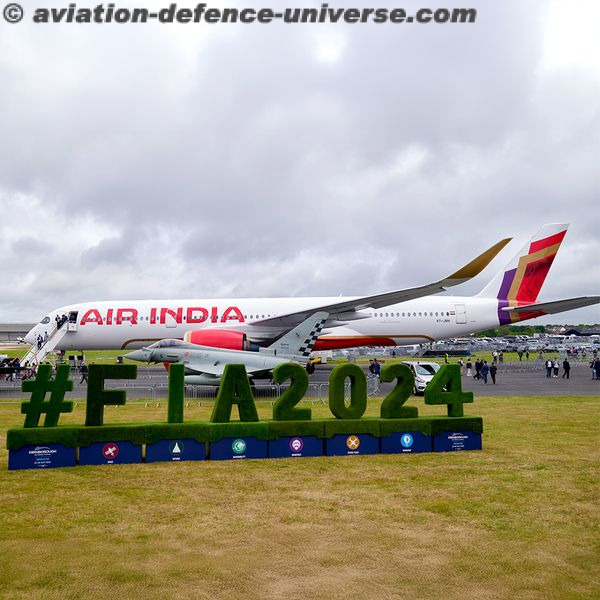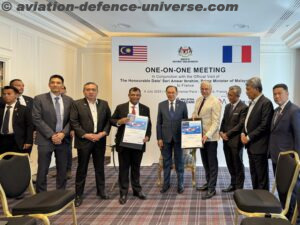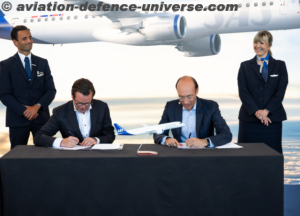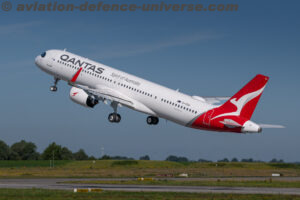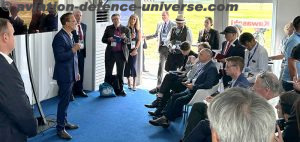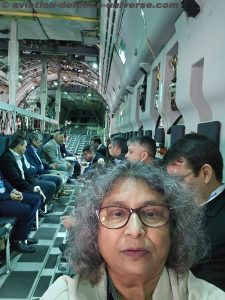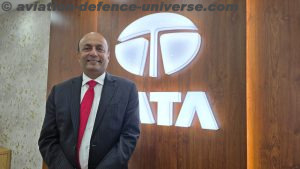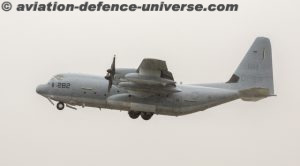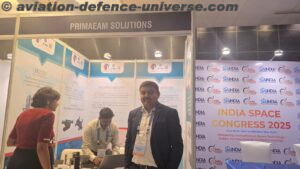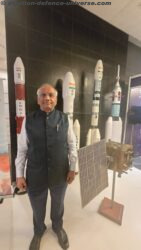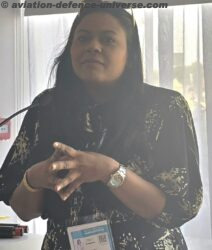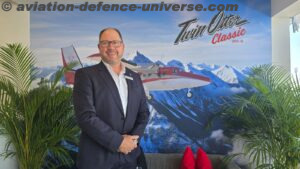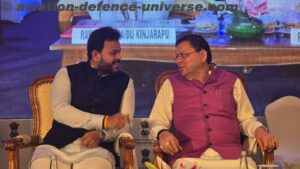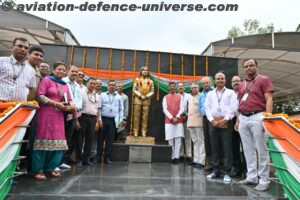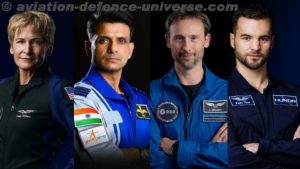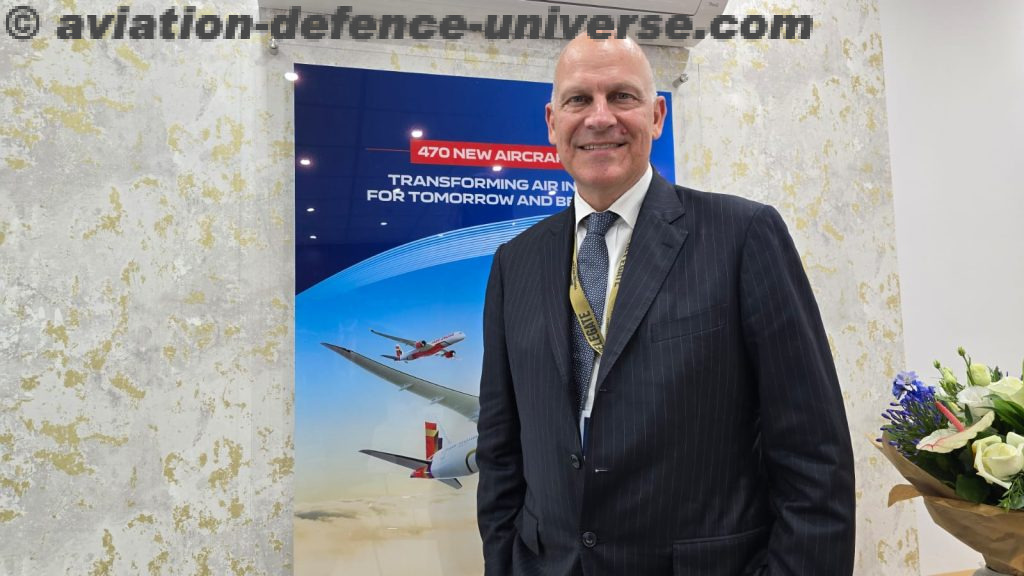
- Transformation Under Tata ownership
- Strategic Innovations and Global Aspirations
- Operational efficiency with revamps
By Sangeeta Saxena
Farnborough, UK. 27 July 2024. In the 21st century, Air India stands at a pivotal juncture in its storied history, poised to redefine its legacy in the global aviation industry. As India’s flag carrier and one of the oldest airlines in the world, Air India has embarked on a transformative journey under the new stewardship of the Tata Group, this era marks a significant departure from its past, focusing on modernization, enhanced customer experience, and operational efficiency. Making Indians and India proud at the recently concluded Farnborough International Airshow 2024, was Air India on the tarmac, in the skies and inside the chalet.
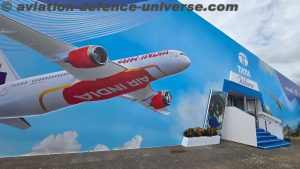
Campbell Wilson CEO & MD Air India stated, “ I think we’ve made very good progress in the last two years. Clearly there’s more to do. The transformation programme was very explicitly five years, but since the last two years, 85 new systems, 9,000 new people, the aircraft order of one of the 70 new aircraft, well to include the 36 old at least already, completely new training academy with 22 flight simulators provisioned for, which is South Asia’s largest, a new base maintenance facility, a new head office campus, new brand, new A350. It is only fair to say that in a very short time we’ve done quite a lot. Having said that, as I acknowledge, there’s still more to do. Probably the most customer facing thing to do is refitting the legacy aircraft that we have,” while speaking with a select set of journalists at the show.
Air India, the national carrier of India, has experienced a resurgence since its acquisition by the Tata Group. The Tatas, who originally founded the airline, have been instrumental in implementing significant improvements and strategic initiatives aimed at revitalizing the airline. The Tata Group’s strategic vision for Air India includes a clear focus on customer service, operational efficiency, and financial stability, driving the airline towards sustainable growth and global footprint.
Campbell exhorted , “ To call India a growth market, I think is a an understatement. It’s already the third largest domestic market in the world for aviation. It’s growing at a rate of 10% compound annual growth. There is a huge middle class up and coming, and a much more affluent population. The propensity of Indians to travel is about where China was 20 years ago, which if you look at per capita GDP is also about the same as where China was 20 years ago. And if you take China’s current rate, it simply reflects ten times increase. So the opportunity in aviation in India is absolutely massive. Now that the airline has been privatized, the whole ecosystem is aligned behind being profitable, providing good service. The aviation industry has witnessed rapid advancements and increased competition, making it imperative for Air India to innovate and adapt. With a renewed strategic vision, the airline aims to reclaim its position as a leading global carrier, characterized by world-class service and robust operational capabilities. Central to this transformation is the emphasis on digitization, fleet modernization, and a customer-centric approach that meets the evolving demands of 21st-century travellers.”
Murmurs of discontent in flights specially long distance with tea tables falling off the hinges, entertainment systems not working, seat covers with the linen coming off and mal functioning air conditioning at times raises a question- when will the airline improve the base necessity for the customer?

“So 470 aircraft is a pretty serious statement of intent. We have leased 36 aircraft with new interiors, new products. A third of our wide body fleet is also with new interiors and new products. 80% of our narrow body fleet will be upgraded by April of next year. The aircraft were delivered in the late 2007-2008 for the most part, and never touched since then. Same seats, same inflight entertainment system. They are out of production. There are no spares. So the whole purpose of reconfiguring and replacing all of this with a retrofit was to get rid of this product, which otherwise can’t be fixed. Now, that’s why we relied on the seat manufacturers to be able to design, certify, deliver, and allow us to install the product, which, as I say, was going to commence this month, has been pushed back a little bit because of this supply chain constraint, but is absolutely the focus to finish as quickly as possible,” responded Wilson.
Transition challenges include integration issues of Air India with other Tata aviation ventures like Vistara and AirAsia India which has also posed logistical and operational challenges, including harmonizing systems, processes, and corporate cultures. Managing the transition and implementing new strategies has been complex, with some resistance to change from within the organization.
He intimated that, “ there are competition clearances and legal clearances to merge, which we’ve got. Then, of course, we’ve got to merge all of the operating practices, procedures, manuals, and train all the staff to those new procedures and manuals. So it’s a very long and convoluted process, but we’re nearly at the end of it, and we’re hoping by the end of this calendar year, we’ll be able to complete both of the mergers. Okay. Then, of course, probably the biggest challenge, aside from the ones I’ve mentioned is IT harmonization, moving everyone onto the same IT platforms and systems. And the second is people. We’re talking a group now of 30,000 employers, and there’s lots of different organization structures, hierarchies within the four businesses that need to be aligned. From a crew perspective, there’s seniorities that need to be harmonized. And then, of course, there’s just emotion involved with moving from one brand to the other, one organization to another. And we’re well through that process, and I think people are now looking forward to the new era and the opportunities it brings. 470 new aircraft means that people will move to command or move to widebody or move to international flight almost at an unprecedented pace. And so people are very much looking forward to what the merger brings in terms of those sort of benefits, rather than what the merger might bring with respect to title and job role change. It’s very rare that you do a merger in the context of such growth.”
In a strategic move to bolster its operational efficiency and global reach, Air India is set to establish additional hubs across key regions. This expansion is part of a broader vision to transform the airline into a leading global carrier, enhancing connectivity, improving service delivery, and driving growth.
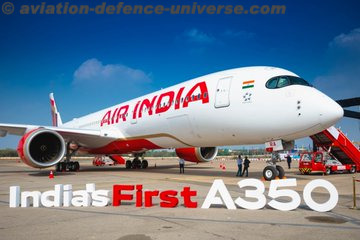
“India had a reasonably sparse and spread out network because, to some extent, it was designed for political rather than commercial ends. Now, we’ve done a lot of reconfiguration, firstly with a view to strengthening the Delhi hub, making sure it has connectivity and as many spokes as the aircraft that we have allow us to operate. And we’ll continue to be strengthening the Delhi hub, because that’s obviously where we already have some strength. But Mumbai has been grossly under served by us, largely due to the airport capacity. It’s effectively a single airport. So we want to strengthen the Mumbai hub and take advantage of the new airport that’s opening outside Mumbai, to be able to build that second hub. Southern India is a different geography altogether, very different catchment. And we see an opportunity to build a hub at Mangalore, because the airport is new, it’s got great infrastructure. And also, from a geographical perspective, it allows for connected flows from Africa, Middle East, Asia, or Australasia. So those will be our three principal hubs. We need a lot of aircraft to build out those hubs to their full potential. And then even when we do, there’s plenty of point-to-point opportunities from India. That’s the beauty of India,” Wilson apprised.
Answering a question on whether AIESL the MRO of Air India still under the previous owners Government of India, was sufficient for the maintenance, repair and overhaul works need, Campbell responded, “No, it’s not. It was not privatized as part of the divestment process of the airline. So as a consequence, we still use them. We are contractually obliged to use them for a while. We are setting up our own MRO facility in Mangalore in conjunction with Singapore Airlines Engineering Company. And we’re breaking ground imminently and hope to have that operational by the end of 2025. Initially, it is intended to serve the Air India fleet or Air India group fleet. As we become comfortable with our own capabilities, to the extent there is spare capacity, then third party businesses is something that we will pursue. It’s part of building out the broader ecosystem too, because in addition to MRO, we also need to build training capability. And so we’ve established South Asia’s largest training academy, which will have up to 22 flight simulators to build the crew that will be needed for those 470 aircraft. And also a flight training school, which has 31 aircraft on board to start building that pipeline network.”
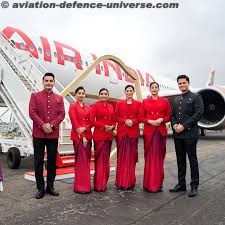
Managing human resource and keeping them satisfied is an art , an ability and a managerial capability of leaders. Campbell Wilson has over 26 years of experience in the aviation sector. He has worked with Singapore Airlines and was the founding CEO of Scoot, a low-cost carrier wholly owned by Singapore Airlines. Throughout his career, Wilson has held various leadership roles that have equipped him with a deep understanding of airline operations, strategic planning, and customer service. His leadership style includes a focus on employee engagement and motivation, which is crucial for improving productivity and service delivery. Emphasis on training and development programs to enhance employee skills and proficiency, ensuring a competent and motivated workforce, has been his trademark.
Campbell excitedly acquainted, “the changing of staff mindset has to be done the right way. There are a lot of people in Air India who were recruited from universities and came into Air India. and were invested in the tools and the support and the decisions to be able to really demonstrate what they were capable of. And now, under a private environment, we’re able to give them that and it has really blossomed. Of course, there were a number of people that were a bit fearful of what a private business might entail, especially given an average age of 54. So we offered a voluntary retirement scheme and many had graceful exits. And I guess the benefit of the organization not having recruited non-flying staff since 1999 was there was a huge role in the organization in terms of people, capability and succession plan. We could recruit, hugely, 4,000 non-flying staff to populate this gap without actually having anyone pushed out as a consequence. And so we’ve almost done a complete legal and culture change in the organization in two years with very little trauma. And it takes a lot of things to settle and be able to become confident and those outside aviation to become familiar with it. But it’s been a remarkably easier journey than you might anticipate. At the same time, the government organization didn’t have job descriptions, didn’t have performance metrics, didn’t have thresholds of good or bad, didn’t have rewards for good, didn’t have consequences for bad, didn’t have promotion based on performance, it was based on tenure. And so just putting those basic performance management HR structures in place also unlock a lot of related capabilities.”
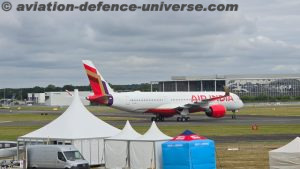
While Air India has made significant progress under Tata ownership, several challenges remain. Addressing these issues requires sustained effort, strategic investments, and effective management. Balancing the need for modernization with financial constraints, enhancing customer experience, and navigating the competitive and regulatory landscape will be key to Air India’s long-term success.
This conversation with the man at the helm of India’s long time national carrier now under the biggest and most respected brand ‘Tatas’ resulted into some takeaways. Wilson’s background in leading a low-cost carrier like Scoot is expected to enhance Air India’s operational efficiency, cost management, and overall profitability. His strategic vision is likely to steer Air India towards sustainable growth, focusing on key markets, route optimization, and fleet modernization. With a strong emphasis on customer experience, Wilson aims to improve service quality, punctuality, and overall customer satisfaction. His efforts are directed towards rebranding Air India and repositioning it as a premium carrier with high service standards. Wilson is expected to drive digital transformation within Air India, implementing advanced IT systems and digital tools to streamline operations and enhance customer experience. Fostering a culture of innovation, Wilson plans to introduce new technologies and services that cater to modern travelers’ needs.
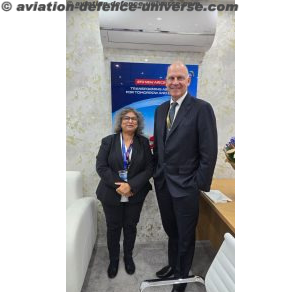
Leveraging his international experience, Wilson aims to expand Air India’s global presence through strategic alliances and partnerships. Optimizing Air India’s route network to enhance connectivity and capture a larger market share in key regions. Despite the positive changes, managing Air India’s substantial debt remains a critical challenge for Wilson. Ensuring cost control while investing in modernization and expansion requires a balanced approach. Navigating the highly competitive aviation market in India and internationally is an ongoing challenge, with low-cost carriers posing significant competition. Capturing and retaining market share amidst intense competition requires strategic marketing and service differentiation. Ensuring regulatory compliance and navigating bureaucratic challenges in India’s aviation sector can impact operational flexibility. Adapting to policy changes and regulatory requirements swiftly is essential for smooth operations. Addressing infrastructure limitations and congestion at major hubs is crucial for improving operational efficiency and optimizing fleet utilization and ensuring timely maintenance and upgrades are vital for reliable service delivery.
The road is long and bumpy and the ride like a roller coaster. When Napoleon Bonaparte said ‘Impossible is a word to be found only in the dictionary of fools’ little would he have known that centuries later the quote would fit so well on a flock of flying metallic birds which is trying to keep the glide smooth. Brand Tata, Name Air India and Campbell Wilson on the pilot’s seat will together hopefully steer the airlines into smooth skies from temporary turbulence.




































